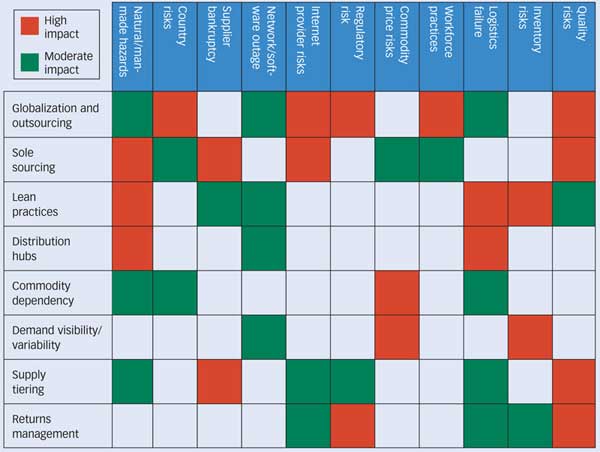The idea is that after different potential supply chain risks have been identified, they can be classified along each dimension. While companies can assess these risks in different ways, a color scheme similar to the one provided below is often used. The red areas indicate risks that need the greatest attention in terms of mitigation strategies, either because they will have a very large impact if they were to occur, or else are very likely to occur; yellow is the next level down, and blue the least worrisome categories.
HP’s Approach
HP is among the companies that employs another type of matrix, one which maps different types of risks against their impact on specific supply chain functions or processes.
As detailed by Christian Verstraete in the most recent issue of CSCMP’s Supply Chain Quarterly. HP uses the matrix below to help it understand the impact of specific types of supply chain disruptions.

Source: Christian Verstaete, HP
This type of risk assessment matrix helps a company focus which functional or supply chain process areas of the company need to take action to mitigate specific risk types (e.g., quality failures, logistics failures, etc). It also helps companies visualize the interdependencies among functions and processes to specific risk types.
“As companies become increasingly global, their exposure to risk increases,” Verstaete adds. “Despite this fact, many companies are not yet prepared to identify and address supply chain risks. These companies thus make themselves more vulnerable to business disruptions.”
Using these types of tools is a solid place to start.
What types of tools are your company using to help it understand and mitigate risks? Are matrices like those offered above helpful? Are companies focused enough on risk mitigation? Let us know your thoughts at the Feedback button below.
|